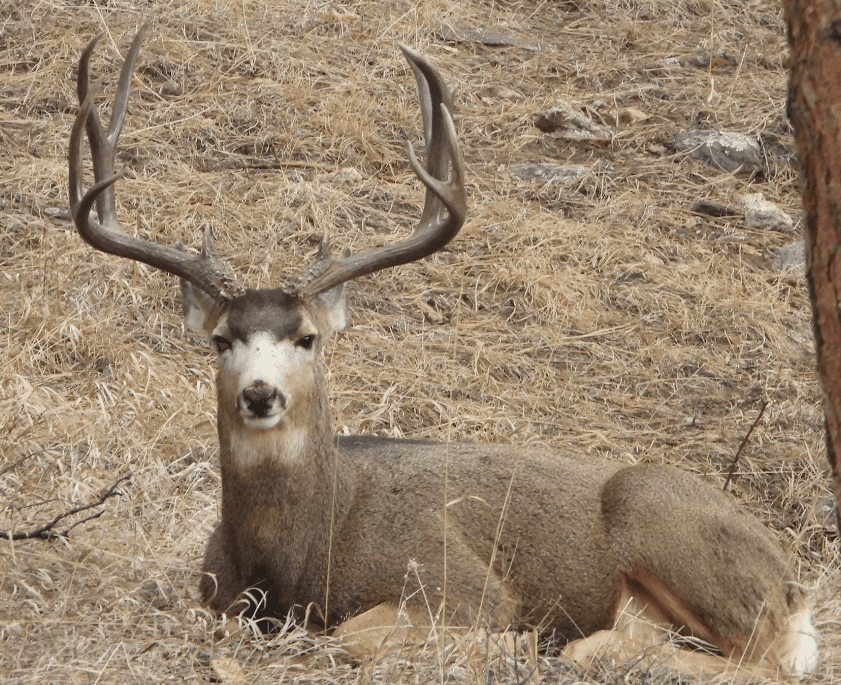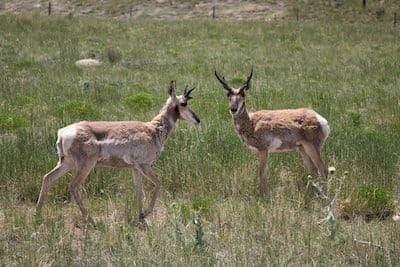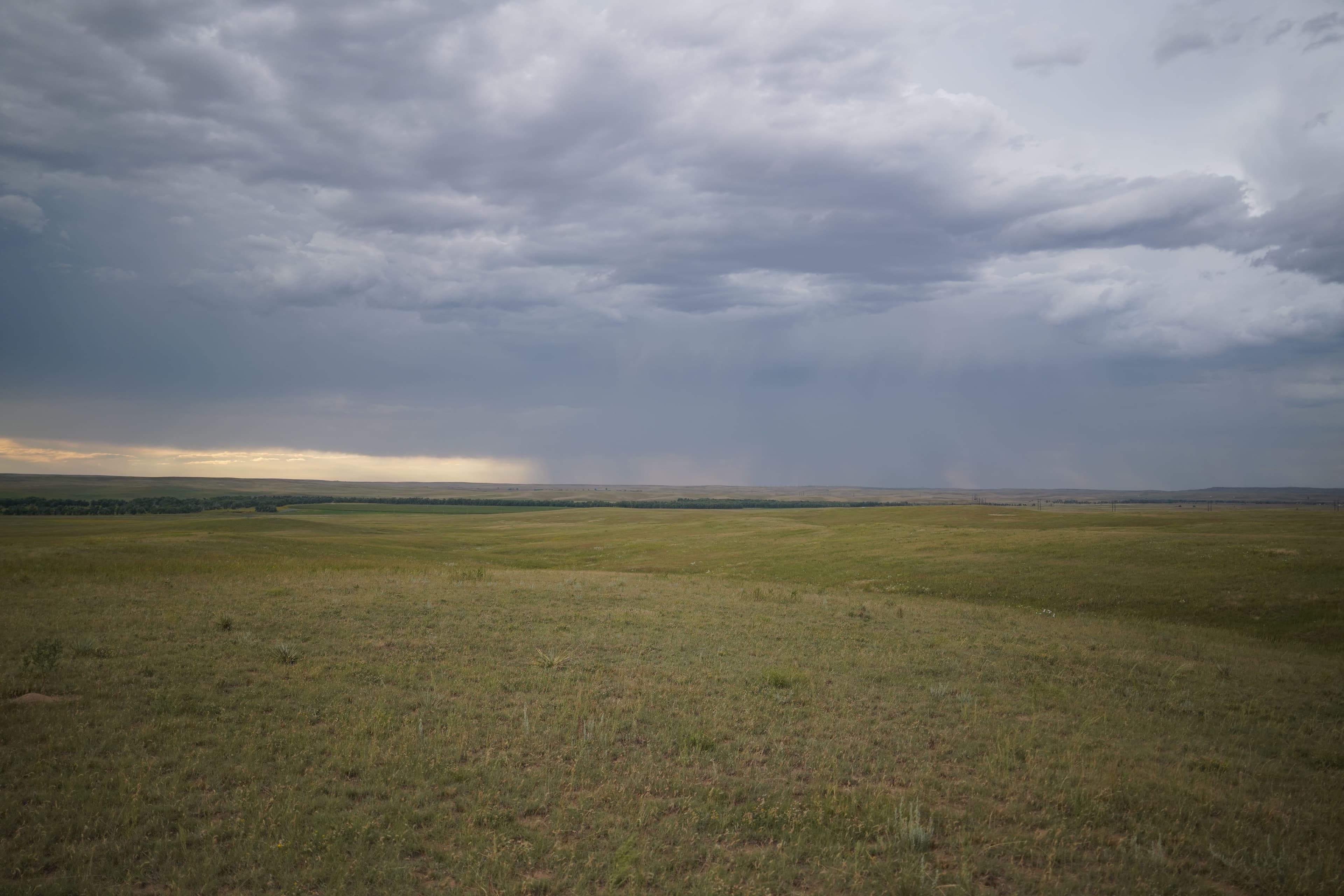Dry Years and Habitat: How Drought Impacts Deer, Ducks, and Other Game Animals


Justin Hunold
08/01/2025
Understanding the Challenge
Drought isn't just a weather condition; it's a long-term ecological stressor. When water disappears from the landscape, it triggers a domino effect. Grasses wither. Insects vanish. Wetlands shrink. And the game species we pursue, deer, ducks, pheasants, quail—must adapt or move. For hunters and land managers alike, understanding how drought reshapes habitat is key to developing smarter strategies and long-term solutions.
Drought Effects by Species
Deer: Whitetails are resilient creatures, but drought tests their limits. In dry years, the quality of forage—especially high-protein browse like forbs and legumes, declines. This nutritional deficit impacts antler growth, body condition, and lactation in does. Fawn recruitment drops significantly due to malnourished mothers and increased predator pressure around limited water sources. Bucks alter patterns, often appearing less during daylight hours and concentrating near isolated water bodies or irrigated food sources, which can affect traditional early-season hunting strategies.

Waterfowl: Ducks rely on a mosaic of seasonal wetlands for nesting, feeding, and migration stopovers. When those wetlands dry up, birds are forced to fly farther and concentrate in smaller, often over-pressured areas. This not only increases mortality due to exposure and predation, but also limits reproductive success as hens abandon dry nesting sites. Drought also affects the aquatic invertebrates and moist soil vegetation critical to duck diets, making private land with managed water resources a key sanctuary.
Upland Birds: Species like pheasants, quail, and prairie chickens are especially sensitive to habitat quality. Chicks rely on a protein-rich diet of insects during the first weeks of life. Drought reduces insect populations, shrinks cover, and stresses nesting habitat, leading to fewer successful broods. Without sufficient thermal cover, birds also struggle to thermoregulate in intense summer heat. Covey cohesion breaks down, exposing individuals to predators. Well-managed cover becomes not just useful, but essential.
Elk: As grazers that depend on expansive ranges, elk suffer when meadows and riparian zones dry out. High-elevation wallows disappear, forage becomes brittle, and bulls reduce travel during the rut to conserve energy. Calf survival drops when lactating cows can’t find protein-rich forage. In dry years, herds may descend earlier into private land valleys, seeking irrigated pasture and low-pressure refuge.
Pronghorn: These fleet-footed plains dwellers are perhaps the most drought-sensitive big game species. Their preferred forage—broadleaf forbs and low shrubs—wilts quickly without rain. Fawning cover thins, increasing vulnerability to predators. In extreme years, pronghorn may migrate far from traditional ranges in search of better habitat, often landing on managed parcels with consistent water, minimal fencing, and summer forage plots.

Bears: Drought impacts bruins primarily through food shortages. With berry crops failing due to lack of moisture, bears are pushed into agricultural fields, neighborhoods, or garbage sources, risking human conflict. Late summer hyperphagia (pre-hibernation feeding) becomes dangerous if natural food is scarce. Managed lands that include riparian restoration and berry-producing shrubs provide critical alternatives.
Mule Deer: Beyond forage loss, mule deer migrations are increasingly disrupted in drought cycles. Snow-fed high-country vegetation dries early, forcing premature descent into transitional habitats. These zones are often less protected and more fragmented, leading to lower survival rates and increased road encounters. Conservation easements, irrigated food plots, and predator-safe bedding zones on private land offer key stabilization.
Conservation Tactics That Work
- Water Retention Projects – These efforts can range from simple dirt-tank construction to complex wetland restorations. Small earthen dams on ephemeral draws, lined guzzlers with float valves, or catchment basins fed by solar pumps are effective ways to provide consistent water. On sloped properties, contour swales and check dams slow runoff and encourage infiltration. Even shallow depressions with native wetland plants can hold enough water to support amphibians, insects, and birds. Landowners can partner with state and federal conservation programs to cost-share these projects, making them economically feasible.
- Rotational Grazing – Rather than continuous grazing, rotational systems move livestock through pastures on a timed cycle, allowing grasslands time to recover. This leads to denser root systems, higher plant diversity, and improved soil moisture retention. By controlling grazing pressure, landowners maintain critical nesting and brood-rearing cover. Strategic fencing and water development support this practice, ensuring livestock access without degrading sensitive areas. In drought years, this strategy allows forage to rebound faster when rains return, creating long-term landscape resilience.

- Food and Cover Plots – In drought-prone regions, planting drought-tolerant crops like milo (grain sorghum), millet, and sunflower ensures wildlife forage persists even in tough seasons. These plots should be placed near escape cover and watered if possible. Strip disking, edge feathering, and staggered planting dates increase insect diversity and habitat value. Use blends that support both fall food and summer cover for nesting or fawning. Landowners can also integrate perennial forage types like alfalfa and clover where water is available, offering year-round nutritional support.
- Controlled Burns and Thinning – Fire is a powerful habitat tool, but in dry years, it's vital to apply it with precision. Prescribed burns reduce thatch, rejuvenate grasses, and control invasive woody species that outcompete native forbs. Burns should be done during windows of low wind and moderate humidity, with extensive fire breaks in place. Forest thinning similarly reduces fuel loads while opening the canopy, allowing sunlight to reach ground-level vegetation that supports game species. When paired with fire, thinning promotes early successional habitat that is ideal for deer browse and upland nesting.
Why Private Land Offers Resilience
Many private landowners have the flexibility to implement proactive habitat strategies that are harder to execute on vast public ranges. Unlike bureaucratic systems that often slow public land projects, private land management is nimble, creative, and immediate. Landowners can shift grazing, plant emergency plots, or install water systems without delay.
The Infinite Outdoors model goes a step further—connecting these progressive landowners with conservation-minded hunters who value low-pressure access and sustainable harvest. By financially supporting habitat-rich parcels, hunters incentivize more of this stewardship.
Through the Infinite Outdoors platform, each property is vetted not just for opportunity, but for resilience—land where wildlife can find refuge when conditions are tough. These aren't just hunting spots—they're living demonstrations of how private land can lead the way in conservation. In drought years, when wildlife funnels to surviving habitat, these managed parcels become critical strongholds—for quail coveys, mallard broods, velvet bucks, and the hunters who chase them ethically.
Moreover, the data collected from users—trail cam observations, animal movements, water usage, and harvest reports—helps inform landowner decisions. This feedback loop encourages adaptive land management that continually improves over time. Infinite Outdoors is building a network where wildlife, hunters, and habitat health all benefit. It’s a scalable model, proving that decentralized conservation can work if hunters support it directly.
Another advantage is predictability. Public land in drought can be hit or miss—what was a productive drainage one year might be bone-dry and overpressured the next. But with Infinite Outdoors properties, hunters can view updated habitat conditions, water status, and field reports before they even load the truck. That level of insight transforms guesswork into strategy.
Private landowners also have the incentive to build for the long haul. They’re not just providing access—they’re growing habitat banks. With every native grass reseeding, every water project installed, they are not only improving their land, but investing in wildlife futures. When hunters participate in this system, they’re not just booking hunts—they're backing a blueprint for sustainable access.
Key Takeaway
Drought doesn’t have to ruin your season. It just demands that we hunt smarter, manage better, and invest in resilient landscapes. Through thoughtful conservation and strategic access to private land, hunters can continue to find success even when the rains don’t come.
Make Your Adventure Drought-Proof
Download the Infinite Outdoors app and explore hunt-ready properties managing for habitat resilience—even in dry years. Tap into local insights, reserve access, and support landowners who are doing it right.